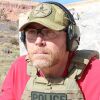The PoliceOne Academy features courses on responding to medical emergencies, including using chest seals and tourniquets, rendering first aid to a downed suspect, and delivering CPR. Complete the courses to improve your first aid and life-saving skills. Visit PoliceOne Academy to learn more and for an online demo.
Your jurisdiction often determines how quickly medical services can get to anyone needing care. Some towns have ambulances roaming the streets, while in some municipalities fire personnel show up on scene in SUVs while an engine is still on the way. When I started in patrol, the quickest ambulance response was around 20 minutes. Definitive medical care was 60 miles away. I became an emergency medical technician (EMT) because I got tired of not knowing what to do at medical calls, especially because I was usually the first one there.
I have heard cops offer many reasons why they do not seek out medical training – things like, “It’s not my job” or “That’s what the paramedics are for” or even, “I might get sued if I get involved.” I have even heard the argument that it’s enough already that we have to be trained fighters, conflict resolution specialists, counselors, rescuers and coaches. Now you want me to be a medic too? I get it.
However, in many response situations, LEOs are often first on scene and can initiate life-saving with some very basic – yet essential – skills. Officers now carry tourniquets to quickly stop the bleed. They can also master the act of pushing hard and fast to deliver hands-only CPR. When a person’s heart stops, immediate compressions followed by rapid defibrillation can make the difference between life and death. In a sudden cardiac arrest, survivability reduces by 10% for every minute of delay in care – so the ability to deliver effective compression at 100 beats a minute (think of the tune “Stayin’ Alive”) is far less complicated than whatever arrest control or defensive tactics you practice. First aid is pretty straightforward and now even includes derivatives of Tactical Combat Casualty Care (TCCC) learned from military action abroad.
With that in mind, here are several reasons why police officers should get certified in first aid and CPR:
Someone loves that person
Life is hard on the beats we work. We see lives thrown away for trivial reasons. I got into this profession, perhaps naively, to help people. There are no people in greater need than those having life-threatening medical emergencies. If you can help someone, consider yourself fortunate and render aid. Some people will be eternally grateful you did. I once helped a young mother and her infant daughter who was born in a toilet. I watched that little girl grow up in my town and felt a measure of pride every time I saw her.
The life you save could be your partner’s
We work in a dangerous environment where the threat paradigm evolves daily. We need to train to be prepared to render medical assistance. Even the most basic skill of applying direct pressure to a bleeding wound could make a huge difference. Your partner may become the victim of an attack where these skills are crucial; they may also have a medical condition that could strike them at any moment. I have read too many articles about police officers dying in the line of duty after having a stroke or sudden cardiac arrest. You can help give them every fighting chance to survive.
The life you save could be someone you love
We often consider ourselves safe after we get home and take off our uniform. If your child chokes on something, will you know what to do? What if one of your parents suffers an acute illness? What if an accident happens? With enough practice, the normal panic of taking care of loved ones will pass and you will be able to deliver initial care, possibly buying critical time to get to definitive medical care.
Having cared for loved ones in crisis, I can tell you there is an enormous amount of internal pressure to help. After all, we are the problem-solvers on the street, right? We are the emergency authorities. You may fall apart after you have helped a loved one to the best of your ability, but at least you can say you treated them and gave them a better chance than they would have had otherwise.
The life you save could be your own
There are few people who would argue against this logic. If you are shot, stabbed, run over, beat down or have some type of non-trauma related emergency, knowing what to do could mean the difference between returning to duty and a funeral procession in your honor. At a minimum, learn how to use a tourniquet and combat gauze on yourself and others. Resources are available to help fund these basic essentials if your department does not supply them.
I am thankful I have never had to patch myself up from any serious trauma. However, I have attended too many police memorial services where I wondered if immediate medical care may have made a difference.
Final thoughts
Fleshing out your medical skills is never a bad investment. Even if you simply stabilize a person long enough for medical professionals to take over, you’ve likely saved a life. We all go out to shift each day or night with the goal of coming home. At a minimum, take that responsibility seriously and get trained in skills that could save your own life. You may enjoy a 2-6 minute ambulance response time in your jurisdiction, but in a scenario where response times are longer, you could make a life-saving difference.






